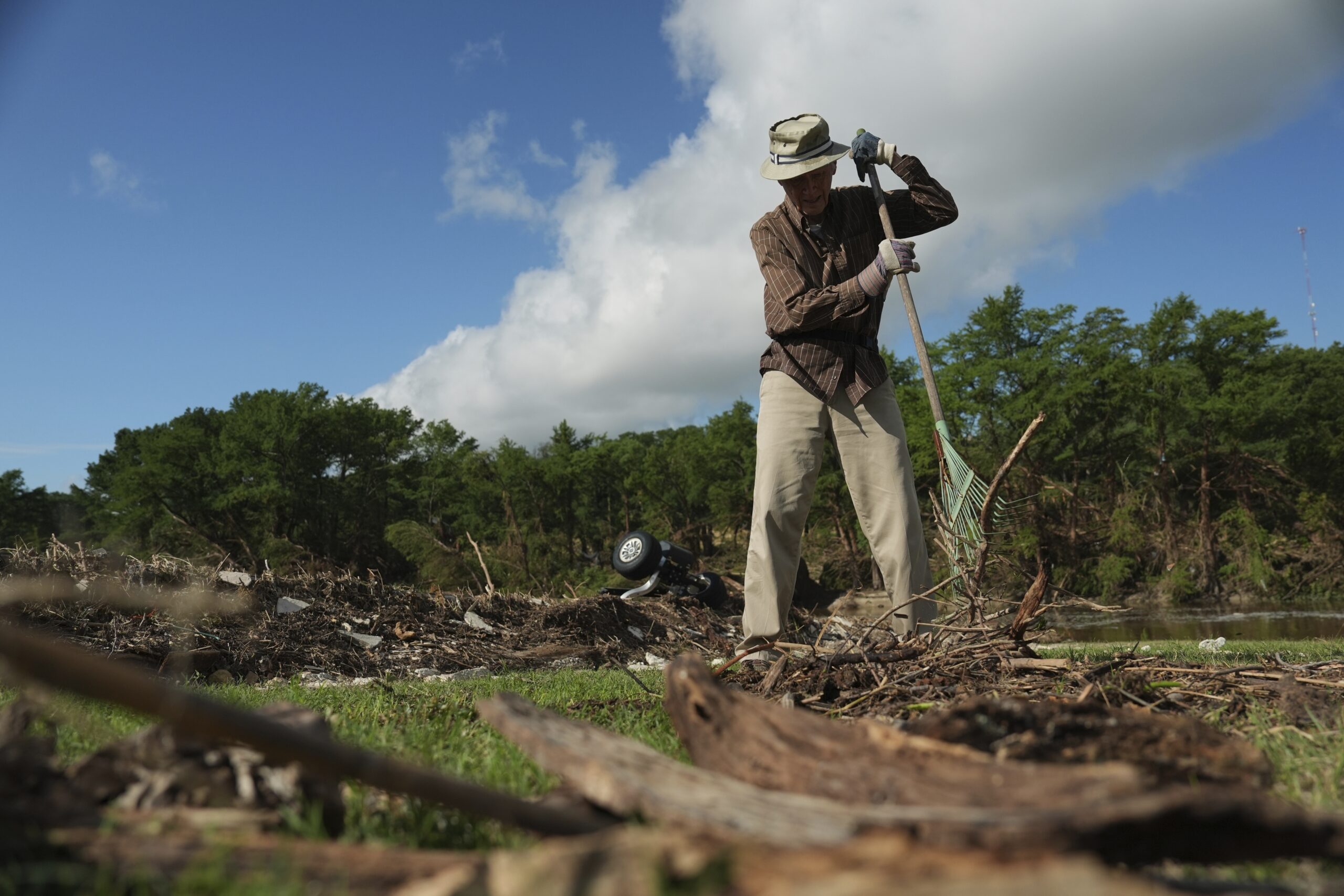Las Americas
And These Are The Good Guys
On January 20, yet another sad chapter of disastrous U.S. troublemaking in Latin American politics went on display, complete, as usual, with arms dealing, drug smuggling, murder, and civil war. And of course, in the middle of it all, the CIA. “Spymaster” Vladimir Montesinos, who diligently served Alberto Fujimori, the corrupt, disgraced and fugitive former President of Peru, went on trial in Lima for brokering the sale of 10,000 rifles to Colombian guerrillas using the proceeds of a Brazilian drug deal.
This isn’t Montesinos’ first trial. He’s had five others since 2002 and is currently serving a nine-year sentence on four counts of corruption. For reasons to be explained shortly, nine years in Peru really means three years, two of which he has already served, so this trial is the big one. A guilty verdict could send him to prison for, nominally, twenty years, and prosecutors are hoping that the threat of real jail time will encourage him to talk.
It’s clear that he has a lot to say. Like Panama’s Manuel Noriega, he has been a shady, on-again, off-again CIA asset since the 1970s, when, as an Army Captain, he resourcefully forged documents for himself and flew to Washington to meet with the U.S. spooks. For this burst of initiative, he was court-martialed by the Peruvian Army, but charges of treason were dropped after high-level intervention. Once out of the Army and out of jail, he collected a law degree and went to work defending tax evaders and leaders of the Peruvian and Colombian drug cartels. Because of his cultivation of a system of corrupt judges and prosecutors, he developed a well-deserved reputation for getting his clients off, together with an affluent network of well-armed friends in high places.
Montesinos’ connections with the drug cartels provided him with an opening to the country’s corrupt intelligence service, the SIN, where he covered up massacres perpetrated by the military during the war against the Shining Path insurgency. After successfully suppressing tax evasion charges against candidate Alberto Fujimori during the 1990 election, he became the new President’s chief adviser and ultimately, the director of the SIN.
For some 10 years thereafter, working hand-in-glove with Fujimori, Montesinos compiled an impressive resume: running a death squad, torturing peasants, dealing drugs, massacring students and so on. This political idyll came to an end, however, when a video showing Montesinos bribing a Peruvian legislator made its mysterious way to a television network and was broadcast nationwide in 2000.
¡Was his face red! And the Congressman, too. With great presence of mind, Luis Alberto Kouri, the bribee in question, explained to the press that the money on the tape was a loan to buy a truck he needed to distribute food to the poor. For his part, Montesinos didn’t bother to lie; he just hung on until the guns-for-drugs deal completely unraveled, and then apparently thought it best to disappear for about a year and a half. Fujimori also left Peru abruptly, after a pathetic attempt to hunt down the missing Montesinos while wearing a flak jacket and pretending that he didn’t know what was going on.
For many months following the Presidential implosion, the country was treated to a TV maxi-series of Vladi-Videos, showing an assortment of public officials in a host of compromising positions. Ratings soared, and in the end, Montesinos, his appearance altered but his spirit unbroken, was hauled back to Lima to face—justice, of a sort.
So here we are today. Let me just point out quickly that this trial is not your wretched Washington Sex-with-the- Intern scandal. We’ve got here—let’s see, former Soviet bloc weapons dealers, the CIA, Middle Eastern merchants of death, Brazilian drug traffickers, the CIA, Colombian guerrillas, the CIA, and the head of the National Intelligence Service of Peru. You name it.
According to the charges, two drug trafficking brothers, Jose Luis and Luis Frank Aybar, duly tarted up as Peruvian Army officers by Montesinos, met with long-time CIA asset Sarkis “Merchant of Death” Soghanalian in Amman, Jordan, to arrange for the purchase of 50,000 surplus Kalashnikov rifles from the Jordanian military, ostensibly for the Armed Forces of Peru. Another CIA asset, Charles Acelor, had put the Aybars and Soghanalian in touch. Soghanalian swears he checked the Aybar brothers’ credentials before arranging the purchase of such a large arsenal, and that Montesinos vouched for them as representatives of the government of Peru.
Between March and August 1999, a Ukrainian-registered surplus military cargo jet made four shipments of a total of 10,000 automatic rifles. But the rifles never went to Peru. Instead, the Russian crew air-dropped the guns into southern Colombian territory controlled by the 17,000 member Revolutionary Armed Forces of Colombia (FARC). It turns out that this was only fair. After all, the FARC was the party that paid for the guns with $8 million made selling cocaine to Brazilian traffickers. Montesinos and Soghanalian allegedly were only the middle men, taking their respective cuts.
After the first drop in March, the plane flew on to Iquitos, an Amazonian city in Peru. There, however, the pilots were subjected to awkward questioning by out-of-the-loop anti-narcotics police, suspicious of empty planes with Russian crews flying around in the Amazon. According to the prosecutor in the case, Ronald Gamarra, the Iquitos police received calls from Lima, after which they backed off, and released the crew and the plane. The three subsequent flights then avoided Iquitos, flying directly into Lima after the airdrops, no problem.
The hitch came when the government of Jordan cancelled the deal, reportedly after a tip from the CIA that the East German/Jordanian weapons were turning up in the hands of captured Colombian guerrillas. The guns were too easily traceable to Soghanalian (and so to the CIA), the guy with the connections to put together exactly that kind of trade. Meantime back at the palace, Fujimori and Montesinos hastily cobbled together a press conference, where they announced that they had busted the FARC’s arms and drug trafficking ring with an operation named “Plan Siberia.” Don’t even ask. And then they turned their hapless associates, the Aybar brothers, over to the authorities, or, in other words, themselves.
The Peruvian prosecutor who has pieced the case together is arguing this month that the CIA was not simply a bystander and casual acquaintance of the two principals: Montesinos and Soghanalian. On January 18, he told El Comercio, Lima’s most respected daily newspaper, that he will prove that the CIA was deeply involved, knew that the weapons were bought by and for the FARC, and allowed them to be delivered. The prosecutor argues that, at this point in 1999, the FARC held a sizable demilitarized zone in Colombia and was engaged in peace talks with the government. At the same time, Plan Colombia, a package of mostly military support with a price tag of over one billion dollars, was pending in the U.S. Congress. Those interests pushing Plan Colombia needed for that war to heat up—bad. Which it did. Dating from early 2000, the FARC showed an increasing intransigence in the talks with the Colombian government that ultimately ended the peace negotiations and the war in Colombia has been escalating ever since.
Perhaps the strongest part of the case against the CIA comes from the Government of Jordan. Atef Halasa, Chief of Protocol for the Ministry of Foreign Relations of Jordan, told a Peruvian congressman investigating the sale, “The American government knew about this. The CIA authorized it.” Period.
Gamarra will also base his argument on statements and documents provided by Charles Acelor, the alleged CIA asset and contact man, after he was arrested in Germany and extradited to Peru. Acelor has supposedly delivered evidence from a Peruvian informant of the U.S. Drug Enforcement Agency (DEA) and of British intelligence showing that the CIA was aware of a major drugs-for-arms deal involving high-level Peruvian officials at least one month before the first shipment was made in March 1999. Acelor, who tends to be arrested almost anywhere he goes except the USA, also insists that Death Merchant Soghanalian would not take a step without CIA approval.
Soghanalian, incidentally, is an interesting character in his own right: he was recruited by the Reagan White House and Saudi Arabia to supply Saddam Hussein with billions of dollars in weapons during the Iran/Iraq War in the 1980s. Currently, he is in custody in Los Angeles, but the Peruvian prosecutor believes he has made appropriate arrangements with U.S. authorities in order to avoid extradition to Peru.
The lack of cooperation forthcoming from the CIA in matters involving Montesinos is also curious. Given the Agency’s concern about terrorists in general, about Colombian terrorist guerrillas and their compulsive narco-trafficking in particular, and about Middle Eastern weapons floating around loose, you would think our Good Guys would be all over this. Surprisingly, they could not care less. Prosecutor Gamarra has formally requested a deposition numerous times from Robert Gorelick, the CIA operative in Lima during the reign of Fujimori who supposedly dealt with Montesinos. To date, Gamarra says, he has received no response. Not even a phone call. How rude. He’s puzzled by this, and pointed out that both the DEA and the FBI are cooperating very politely.
Actually, indirectly, there has been a response from the CIA. El Comercio reported recently that in December 2003, the first diplomatic steps were taken to extradite the Aybar brothers to the United States for purposes of an investigation in Washington. That should shut those two up. It should also shut Montesinos up, because if he starts blabbing, he could be next. He could wind up totally forgotten in a Florida slammer right next to Noriega, also a former CIA goon who was discarded when no longer useful.
Life would be much better for Montesinos if he can hang on in Lima, where, international jurists note unhappily, you can get yourself convicted of just about anything and still be home in time for dinner. Just before kick-off in the Montesinos trial, a judge in Lima found that a leftover Fujimori law was still good: the law stipulates that those guilty of crimes against the government (such as Fujimori and Montesinos) need only serve one third of their sentences in order to pay their debts to society. If convicted and given twenty years, then, Montesinos would really be sentenced to less than seven years, two of which he has already served (in Peru sentences run concurrently). So conceivably, he could be out in time to run for president in 2010.
And speaking of running for president, back at the White House, President Bush announced in January that the U.S. would return $20 million in ripped-off Peruvian assets stashed by Montesinos in the United States. Bush declared that this gesture was evidence of his strong support for the U.N. Convention Against Corruption, which requires countries to cooperate in investigations and to return funds to the countries where they were stolen.
To address any lingering doubts about the matter, a U.S. Embassy spokesman in Lima told the Associated Press as the first week of the trial wound up, “Any assertion, inference or suggestion that any agency of the U.S. government had any involvement in alleged arms or narcotics trafficking related to this trial has no basis in fact.”
Well, that’s a relief.
Gabriela Bocagrande is based in Washington, D.C.


